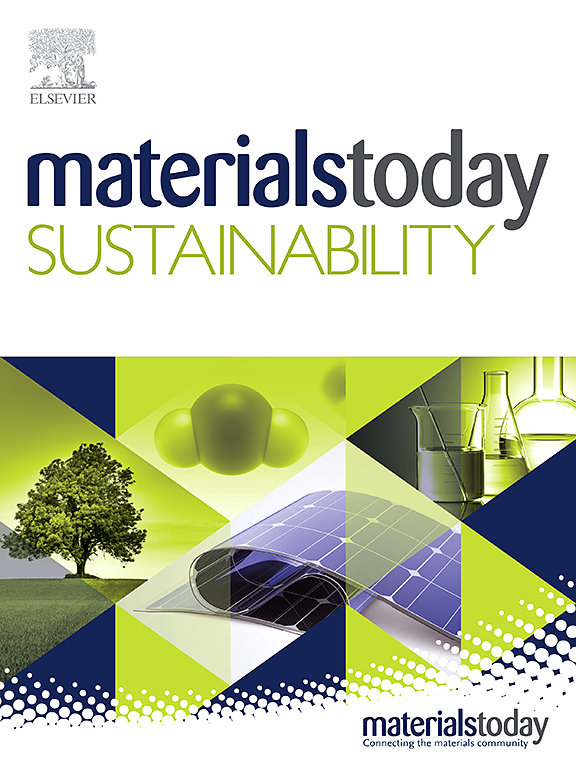Prospect of gold tailings as a new mineral admixture: Effect on hydration, pore structure and mechanical properties of concrete
IF 7.1
3区 材料科学
Q1 GREEN & SUSTAINABLE SCIENCE & TECHNOLOGY
引用次数: 0
Abstract
Gold tailings, with silica (SiO₂) as their primary component, have potential as a mineral admixture. To optimize the utilization of gold tailings while reducing cement consumption, this study investigates their substitution for cement. The effects on fluidity, setting time, mechanical properties, resistivity, hydration products, and pore structure of composite cementitious materials with different gold tailings substitution ratios are explored. Cost effectiveness of these composite concrete was also assessed. Results show that increasing gold tailings substitution moderately reduces fluidity and extends setting time. As low-activity admixtures, gold tailings slightly shorten the dissolution period while prolonging induction and acceleration periods of pastes. They do not alter the hydration product types of cement but improve hydration degree of cement. In the early stages of hydration, a high content of gold tailings increases the number of large-diameter pores. As hydration progresses, these pores are gradually filled by hydration products. Despite a gradual decline in early mechanical strength with increasing gold tailings content, this decline diminishes as hydration progresses at equivalent substitution ratios. Overall, a 10% substitution ratio of gold tailings has proven to be optimal, as the mechanical strength and porosity characteristics of the concrete at 28 d are comparable to those without gold tailings, while also offering similar cost benefits.
金尾矿作为新型矿物掺合料的前景:对混凝土水化、孔隙结构和力学性能的影响
以二氧化硅(SiO₂)为主要成分的金尾矿具有作为矿物掺合料的潜力。为了优化金尾矿的利用,同时减少水泥的消耗,本研究对金尾矿替代水泥进行了研究。探讨了不同金尾矿取代比对复合胶凝材料流动性、凝结时间、力学性能、电阻率、水化产物及孔隙结构的影响。还对这些复合混凝土的成本效益进行了评估。结果表明,增加金尾矿取代量可适度降低流动性,延长沉淀时间。金尾矿作为低活性掺合料,略微缩短了膏体的溶解期,延长了膏体的诱导和加速期。它们不改变水泥的水化产物类型,但提高了水泥的水化程度。在水化初期,高含量的金尾矿增加了大直径孔隙的数量。随着水化过程的进行,这些孔隙逐渐被水化产物填充。随着金尾矿掺量的增加,早期力学强度逐渐下降,但在同等取代比下,随着水化的进行,这种下降逐渐减小。总体而言,10%的金尾矿替代率被证明是最佳的,因为28 d时混凝土的机械强度和孔隙率特征与不含金尾矿的混凝土相当,同时也具有相似的成本效益。
本文章由计算机程序翻译,如有差异,请以英文原文为准。
求助全文
约1分钟内获得全文
求助全文
来源期刊

Materials Today Sustainability
Multiple-
CiteScore
5.80
自引率
6.40%
发文量
174
审稿时长
32 days
期刊介绍:
Materials Today Sustainability is a multi-disciplinary journal covering all aspects of sustainability through materials science.
With a rapidly increasing population with growing demands, materials science has emerged as a critical discipline toward protecting of the environment and ensuring the long term survival of future generations.
 求助内容:
求助内容: 应助结果提醒方式:
应助结果提醒方式:


